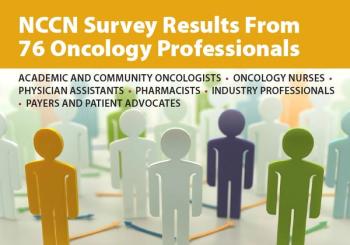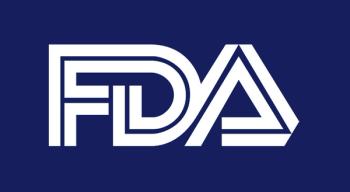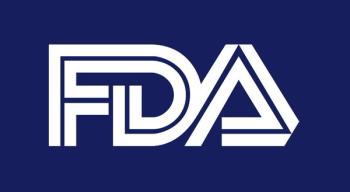
Treatment with the gonadotropin-releasing hormone (GnRH) agonist goserelin can reduce the risk of chemotherapy-induced premature ovarian insufficiency (POI) in women with early breast cancer.

Your AI-Trained Oncology Knowledge Connection!


Treatment with the gonadotropin-releasing hormone (GnRH) agonist goserelin can reduce the risk of chemotherapy-induced premature ovarian insufficiency (POI) in women with early breast cancer.

An NCCN survey taken during the period of congressional debate over new federal healthcare legislation, reports how oncology professionals feel about the possible repeal and replacement of the ACA.

Exposure to harmful environmental factors was linked with cancer incidence across the United States.

This video examines how the use of radiation therapy in patients on immunotherapy can trigger immunogenic cell death, and reviews some of the challenges related to unwanted immune responses from radiotherapy.

Blended cognitive behavior therapy can help reduce the severity of fear of cancer recurrence in survivors, according to a new randomized study.

Female survivors of childhood acute lymphoblastic leukemia were at risk for neurocognitive impairment and were more susceptible to the effects of sleep disturbance and fatigue compared with their male counterparts.

Chlorhexidine wipe bathing might help reduce the risk of deadly central line-associated bloodstream infections (CLABSIs) among cancer inpatients, but barriers can complicate implementation efforts.

Nurse practitioners play a central role in helping patients with esophageal cancer understand and manage their disease and treatment complications.

A noninvasive PET imaging method may serve as a useful predictive biomarker for responses to cancer immunotherapy, according to a new study.

This video reviews how to ensure that older breast cancer patients are receiving the most appropriate care and highlights population studies that can help inform individual treatment decisions.

This video reviews the evidence for safe and effective chemotherapy regimens in older patients with breast cancer and highlights the need for geriatric assessment in this population.

The FDA has approved regorafenib (Stivarga) for the second-line treatment of hepatocellular carcinoma (HCC) for patients who have previously received sorafenib.

The higher prostate cancer death rates seen among black men in the United States may be due to a higher incidence of preclinical disease and higher risk of metastatic progression, suggesting that different screening policies could benefit this population.

The FDA has sent warning letters to 14 companies marketing dozens of unapproved “miracle cure” products online with fraudulent claims that they prevent or cure cancer.

Younger cancer survivors experience worse survival outcomes following a second primary cancer diagnosis than their older counterparts, according to a recent study.

Interim data from CheckMate 040 showed that nivolumab produces durable responses with promising long-term survival rates in patients with advanced, unresectable hepatocellular carcinoma.

Administration of dexrazoxane along with adjuvant chemotherapy was cardioprotective in patients with HER2-positive breast cancer treated with chemotherapy followed by 1 year of trastuzumab maintenance therapy.

From 1983 to 2007, the incidence of renal-malignancy end-stage renal disease has greatly increased, according to the results of a study.

Value in its essence is preference or outcome divided by cost, or described in terms of a mathematical equation, value = outcome (preference)/cost. It follows, then, that value is increased by holding outcome constant and reducing cost, or by improving outcome while holding cost constant.

PARP inhibitors are an active, novel, and exciting class of anticancer agents. They have shown clear patient benefit in gBRCA, HR-deficient, and other ovarian cancers.

Ultimately, meaningful value assessment is going to require unbiased comparisons between competing strategies. Decision models are extremely useful in this regard and can provide important insight into cost-effectiveness evaluations.

You may have missed the report concluding that patients had lower readmission and mortality rates if they were under the care of female hospitalists vs their male counterparts. I know excellent physicians in both camps and some sorry ones as well.

A risk scoring algorithm based on several risk factors was able to accurately predict chemotherapy-induced nausea and vomiting.

In Oregon, the number of physician-aided dying prescriptions has increased annually since the passing of the state’s Death with Dignity Act in 1997.

In this interview we discuss the use of CTCs and circulating tumor DNA for prognosis and disease monitoring in patients with breast cancer.

This video examines long-term findings from a trial that tested ADT alone vs ADT plus chemotherapy as adjuvant therapy for patients with high-risk prostate cancer, including some surprising results and important takeaways.

This video explores the value proposition in cancer care, with practical considerations for reducing costs at both the hospital and physician level while maintaining optimal care for cancer patients.

Young men who are overweight or obese are at risk of developing severe liver disease or liver cancer in later life, particularly those who have type 2 diabetes mellitus.

This video reviews recommendations for the prevention and management of thrombosis in patients with cancer.

This video highlights recent research in cisplatin-resistant testicular cancer, including a study on whole exome sequencing that revealed several actionable targets.